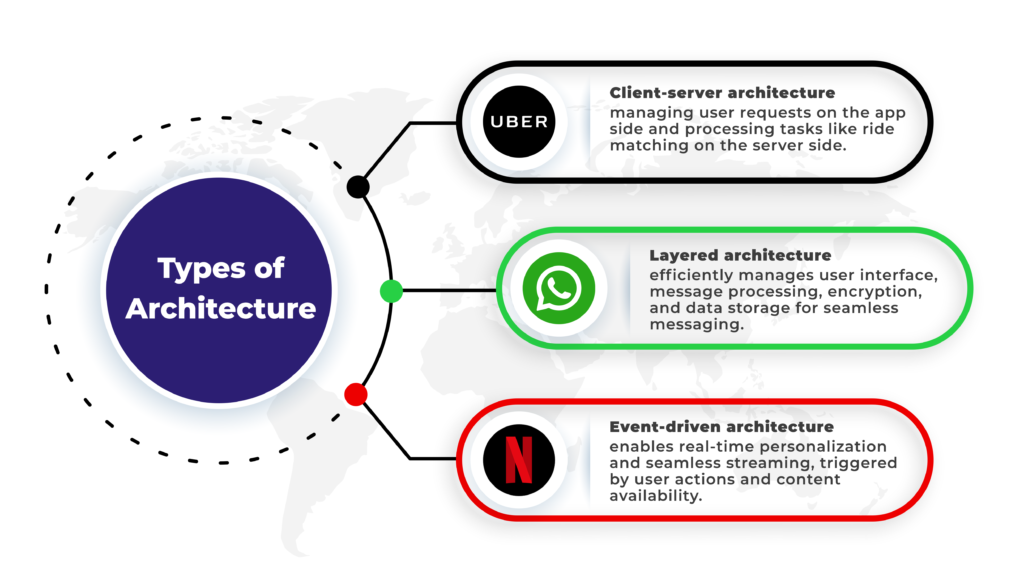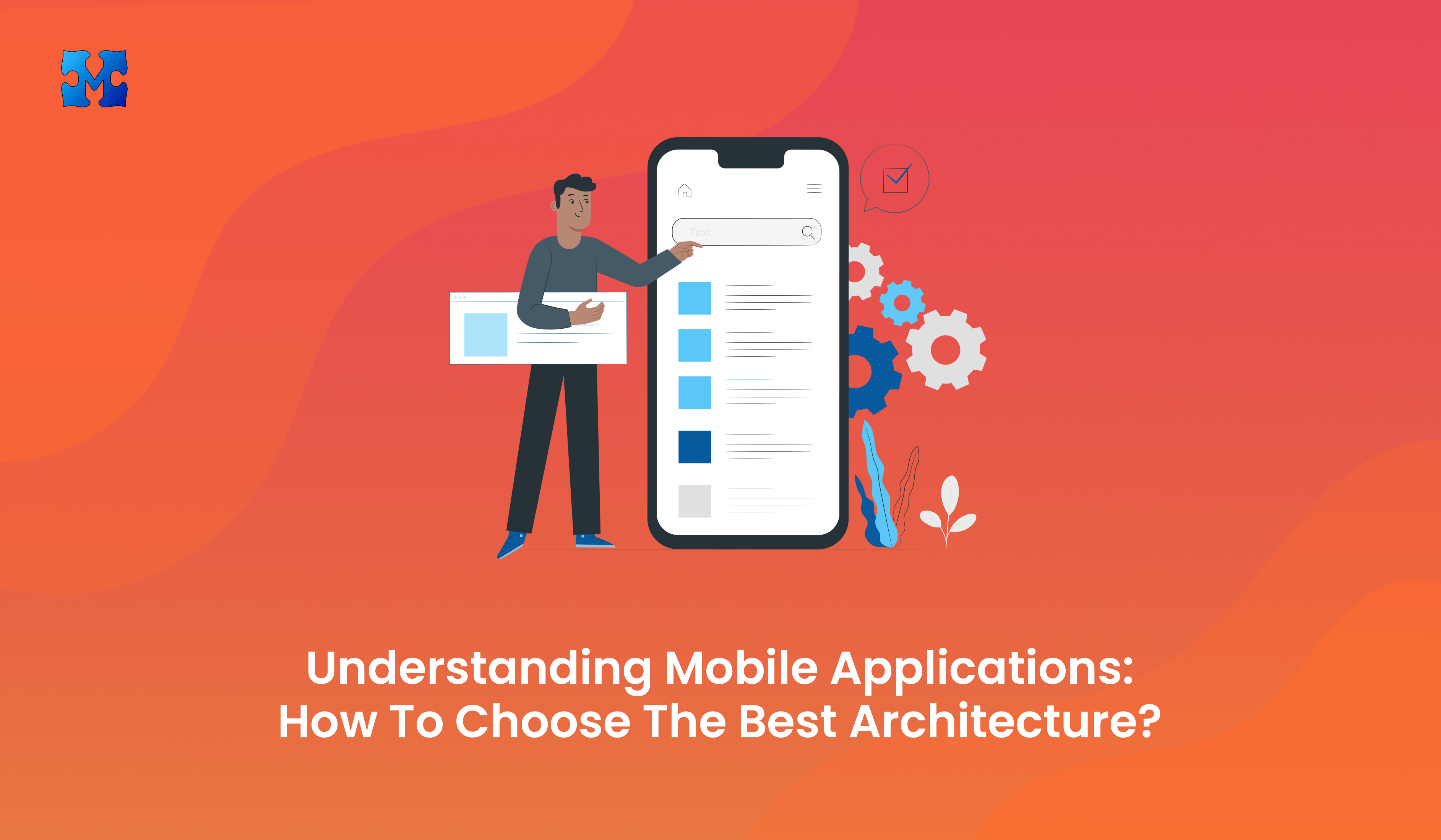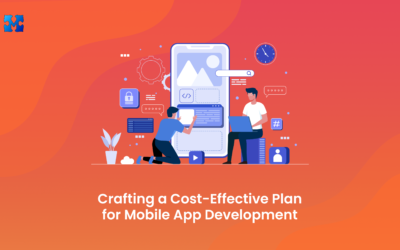There are over 3 billion smartphone users and 1.4 billion tablet users around the globe, not to mention a whopping 4 million-plus mobile applications out there. With a growing tribe of eager users keen on buying, selling, and experiencing commerce via mobile, the demand for mobile-based services has exploded in recent years.
By 2024, the revenue generated by mobile apps is expected to soar to $935.2 billion, with app stores and in-app purchases playing a significant role in driving this growth.
When it comes to mobile apps, their success or failure often boils down to one key factor: their architecture. In this blog post, we’ll dive deep into the world of mobile application architecture, exploring how to pick the right one and discussing various aspects and categories.
But first, let’s get clear on what we mean by mobile application architecture.
What is Mobile Application Architecture?
Mobile application architecture essentially lays out the blueprint for how a mobile app is structured and organized. It dictates how various parts of the app communicate with one another and how data moves between them. A solid mobile application architecture ensures that the app can grow seamlessly, perform well, remain easy to maintain, and adapt to changes smoothly throughout its development journey.
Importance of Mobile Application Architecture
Mobile application architecture is essential for delivering a smooth user experience, boosting performance, and paving the way for future improvements. It serves as a roadmap for developers, helping them craft mobile apps that are both efficient and dependable. Moreover, a strong architecture reduces development risks, promotes the reuse of code, and fosters collaboration among development teams.
Key Components of Mobile Application Architecture
User Interface (UI): The UI component of a mobile app covers all the visual elements and interactions that users engage with. Its main aim is to provide a user-friendly and captivating experience.
Data Management: This part of the app deals with storing, retrieving, and syncing data with backend servers or databases. It ensures that the app has access to accurate and up-to-date information.
Networking: Networking components manage the communication between the mobile app and external services or APIs. They facilitate the exchange of data and interaction with resources on the server side.
Security: Security is a critical aspect of mobile application architecture, encompassing measures such as authentication, encryption, and data protection. These measures are put in place to safeguard user data and prevent unauthorized access.
Different Types of Mobile Application Architecture
Monolithic Architecture:
In monolithic architecture, the entire app is constructed as a single, tightly interconnected unit. All features and functionalities are bundled together, which simplifies the development and initial deployment process. However, as the app expands, this approach can pose challenges in terms of scalability and maintainability.
Microservices Architecture:
In a microservices architecture, an app is divided into small, standalone services, each handling distinct functionalities. These services interact with one another through APIs, which promotes flexibility, scalability, and simplified maintenance. This approach fosters agile development and makes it easier to scale individual components as required.
Layered Architecture:
Layered architecture divides an app into separate layers, each handling specific tasks. This approach separates presentation, business logic, and data management layers, promoting modularity and code reuse. However, it may introduce complexity in communication between layers.
Client-Server Architecture:
Client-server architecture splits the app into two parts: the client side and the server side. The client side manages the user interface and interactions, while the server side handles data processing and storage. This architecture facilitates efficient data management, centralizes logic, and supports scalability.
Event-Driven Architecture:
Event-driven architecture emphasizes communication and responsiveness through event triggers. Events from various app components prompt actions or updates in other components. This architecture is well-suited for real-time applications and fosters loose coupling between components.
Real Examples of Mobile Application Architecture:

Instagram: Microservices Architecture
Instagram, a popular social media platform, employs a microservices architecture. Different microservices handle tasks like photo uploads, user authentication, notifications, and search. This architecture allows Instagram to scale individual services independently, ensuring a smooth user experience despite having millions of active users.
Uber: Client-Server Architecture
Uber, a leading ride-sharing platform, utilizes a client-server architecture. The mobile app serves as the client, managing user requests, location tracking, and ride bookings. The server-side infrastructure handles tasks like ride matching, payment processing, and driver dispatch. This architecture enables real-time communication between users, drivers, and the backend system.
WhatsApp: Layered Architecture
WhatsApp, a widely used messaging app, employs a layered architecture. The presentation layer manages the user interface, while the application layer handles message processing, encryption, and delivery. The data layer ensures efficient storage and retrieval of messages. This layered architecture supports scalability and efficient management of messaging functionalities.
Netflix: Event-Driven Architecture
Netflix, a renowned streaming service, relies on an event-driven architecture. Events such as user preferences, playback status, and content availability trigger actions throughout the app. This architecture enables real-time personalization, content recommendations, and seamless streaming experiences.
How to Choose the Best Mobile Application Architecture?
When deciding on the optimal mobile application architecture for your project, several factors warrant consideration:
- Project Requirements and Objectives: Evaluate the core business objectives and the necessity for a mobile application in alignment with business operations and vision.
- Scalability Needs: Determine the anticipated user load and whether there may be a sudden surge in user base due to external factors like events, occasions, or launches.
- Performance Expectations: Understand how users will interact with the system and identify the key features that most users will utilize.
- Development Team Expertise: Assess the proficiency and strengths of your mobile app development team. What are their primary unique selling points (USPs) and areas of expertise?
- Integration with Existing Systems: Determine if the mobile app needs to integrate with any existing systems or third-party platforms.
- Development and Maintenance Costs: Consider the budget allocated for both the development and ongoing maintenance of the application. Are there any specific requirements or expectations in terms of cost?
- Time-to-Market: Determine the urgency of the mobile application’s deployment. Are there any strict deadlines or time-bound commitments?
The chosen architecture should be in line with the project’s time constraints. Some architectures, like microservices, facilitate rapid development and deployment, while others may necessitate more upfront planning and development time.
Android & iOS Mobile Application Architecture
Android and iOS applications typically adhere to the Model-View-Controller (MVC), Model-View-Presenter (MVP), or Model-View-ViewModel (MVVM) architectural patterns. These patterns aid in separating concerns and promoting modular development.
Model-View-Controller (MVC) Architecture:
MVC divides the app into three components: the model (data and business logic), the view (user interface), and the controller (facilitates communication between the model and the view). It encourages code reusability and simplifies testing.
Model-View-Presenter (MVP) Architecture:
MVP divides the app into three components: the model (handling data and business logic), the view (managing the user interface), and the presenter (serving as a mediator between the model and the view). The presenter acts as an intermediary, managing user interactions and updating the view accordingly.
Model-View-ViewModel (MVVM) Architecture:
MVVM separates the app into three components: the model (containing data and business logic), the view (managing the user interface), and the view model (serving as an intermediary between the model and the view). The view model exposes data and commands to the view, enabling data binding and facilitating easy synchronization.
Mobile application architecture is a critical aspect of app development, influencing performance, scalability, and user experience.
Frequently Asked Questions About Mobile Application Architecture
Q1: Why is mobile application architecture important?
Mobile application architecture is essential as it provides a structured approach to designing and developing mobile apps. It ensures the scalability, maintainability, and performance of the application, while also promoting code reusability and modularity. A well-designed architecture enhances the user experience and facilitates future updates and enhancements.
Q2: What are the primary components of mobile application architecture?
Mobile application architecture encompasses various components, including user interface (UI) design, backend services, data storage, networking, and device compatibility. These components collaborate to deliver a seamless and responsive mobile app experience.
Q3: Which architectural pattern is commonly used for mobile app development?
One commonly used architectural pattern for mobile app development is the Model-View-Controller (MVC) pattern. MVC divides the application logic into three interconnected components: the model (handling data and business logic), the view (managing the user interface), and the controller (managing user input and updating the model and view). This separation facilitates maintaining a clear code structure and enhances maintainability.
Q4: How does mobile application architecture impact performance?
Mobile application architecture significantly influences performance. By adhering to best practices such as optimizing data retrieval, implementing efficient caching mechanisms, and minimizing network requests, a well-designed architecture can ensure fast response times and seamless user interactions, ultimately leading to an enhanced user experience.
Q5: What considerations should be made for cross-platform mobile application architecture?
When designing a cross-platform mobile application architecture, it’s crucial to select a framework that supports code sharing across multiple platforms. Architectural patterns like Model-View-ViewModel (MVVM) and frameworks such as React Native or Flutter can facilitate code reuse. Additionally, considering platform-specific nuances and optimizing performance for each platform is essential for delivering a consistent user experience.




